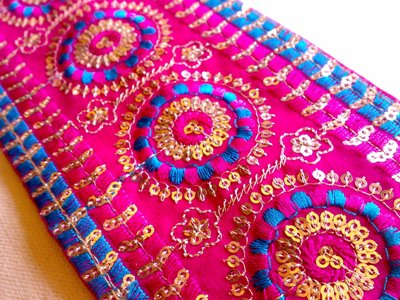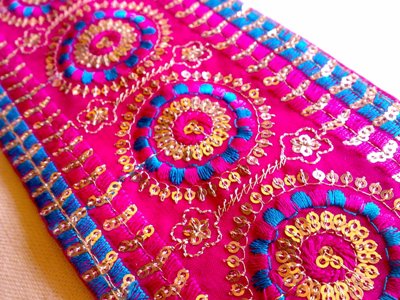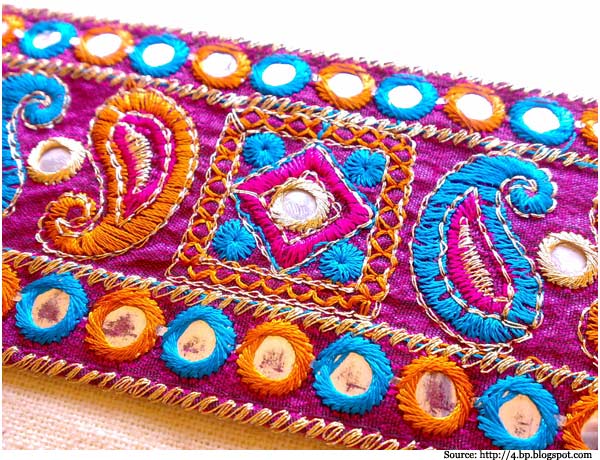
Embroidery
Embroidery is the craft of decorating fabric with patterns, motifs or abstract designs, stitched in strands of yarn or thread, using a needle. Embroidered work includes sewing of adornments such as beads, metal strips, pearls, mirrors, and sequins. It is classified according to its underlying foundation fabric and whether the design is stitched on top of, or through the base fabric.
History and Origin
It traces its origins to China and it evolved in the 3rd century itself. Archaeological findings dating back to 2000 BC, like needles, embroidered fabrics, confirm the existence of needlework, which later formed the embroidery technique. It grew to remarkable levels under Emperor Akbar’s rule in the 16th Century, due to his keen interest in the aesthetics of textiles.
The Making
With the majority of traditional Indian embroidery comprising needle-work to form different motifs, there are others forms as well. For instance, aari work is done using a small hooked awl (needle used for embroidery) for fine chain stitch work. The aari is pushed into the fabric, with the thread below the fabric being pulled into a loop around the tip of the aari or awl. Then, the loop forms a stitch once it is pulled through the surface.
Variety
Kashida embroidery from Kashmir comprises designs of common local symbols like the chinar leaf, apple blossom, lily, the saffron flower grapes, cherry, plum, and various birds of the region. Kantha, on the other hand, is done on cotton fabric, using a range of stitches intricately worked together with knotted stitches on a fine white muslin base, creating designs with raised surfaces. The creation of ‘jali’ is one of the features of Kantha. Tribal embroidery, highlighted by simple motifs and bright shades, are usually sewn using colored threads, and do not generally form symmetrical patterns. ‘Toda’ by the Nilgiri tribe, and Banjara and Lambadi are quite famous as forms of tribal embroidery. Abhala Bharat (a form of mirror work embroidery) from northwest India, is also quite popular.
Present Day Scenario
The most commonly used fabric had been cotton, silk, and satin for a long time. Also, from symbolizing simple motifs in the initial centuries of its existence, embroidery as an art form has branched out into an intricate process. Includes the use of darning, surface darning, and couching, satin, open chain, herringbone, cretan, interlacing, running, back, laced running, stem, looped stem, chain, radiating and button hole stitches. Threads are fashioned mostly from floss or twist silk, cotton and, more recently, acrylics. Depending on the region, the stitching techniques differ. Besides, it is done not just on outfits now, but also used elaborately as a motif on accessories like handbags, home decor items like wall hangings etc.
Innovations
In the recent decades, Indian embroidery motifs have gained much popularity in the global fashion scenario. As a result, Indian embroidery is now sewed on to not only Indian fabrics and outfits ranging from sarees, salwar suits, dupattas, lehenga choli to Indo western gowns, tunics, and kurtas.
Maintenance
From thread to sequins, mirror or beaded embroidery, these outfits should ideally be washed separately to avoid the embellished adornments from getting tugged at, or loosened, thus spoiling the embroidered pattern or motif.
References
Categories: Motifs & Embroideries




